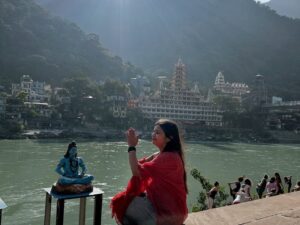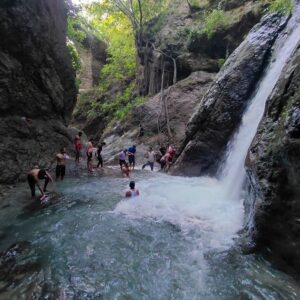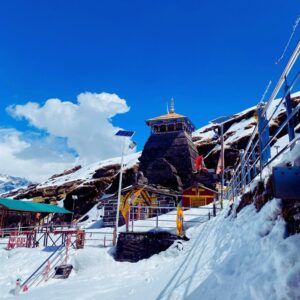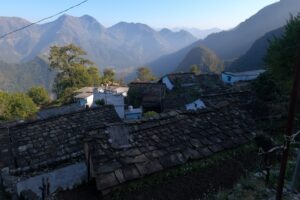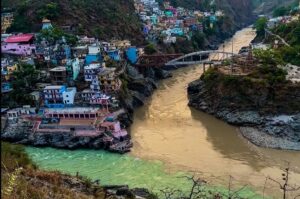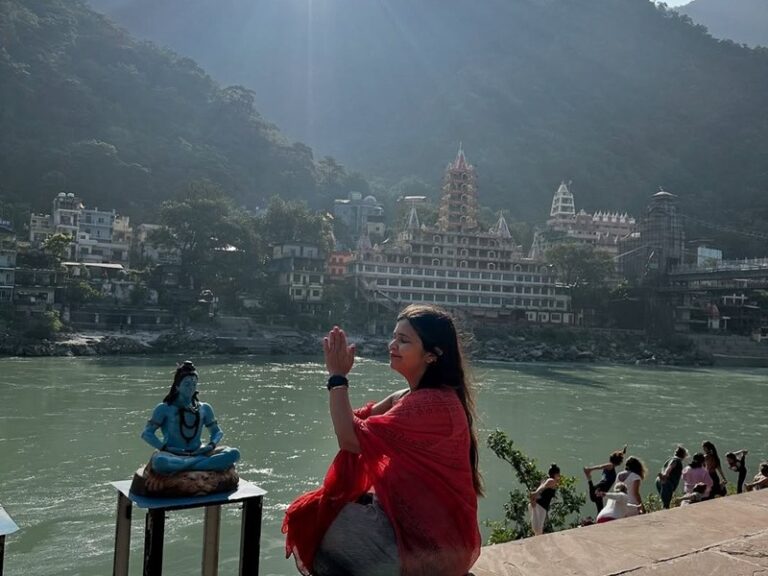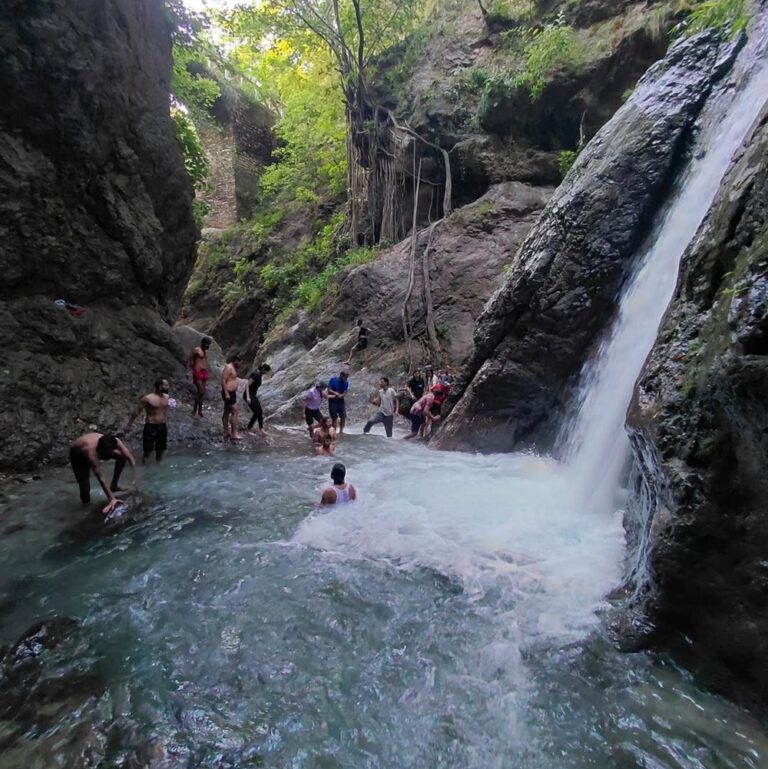Sonprayag to Triyuginarayan Distance (12 Km Drive vs. 5 Km Trek)
The Himalayas are home to countless temples, each holding a unique piece of divine history, but few resonate with the spiritual significance and romantic mythos quite like the Triyuginarayan Temple.
Believed to be the sacred venue where Lord Shiva and Goddess Parvati were eternally united in marriage, this shrine is a magnet for devotees, seekers, and couples aspiring to emulate the divine union.
For thousands of pilgrims visiting the Char Dham circuit, the journey to this celestial site begins at the bustling base camp of Sonprayag, a key transit point in Uttarakhand’s Rudraprayag district.
Understanding the logistics, routes, and travel options for the crucial leg from Sonprayag to Triyuginarayan is paramount for a seamless pilgrimage. This comprehensive guide will equip you with everything you need to know, from transport modes and essential distances to connecting travel hubs.
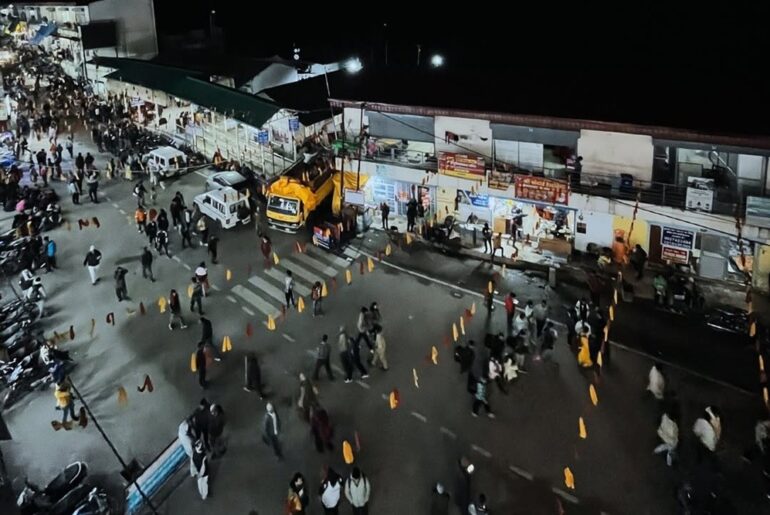
1. The Divine Significance of Triyuginarayan Temple
Before diving into the logistics, it’s worth appreciating the spiritual gravity of your destination. The Triyuginarayan Temple is dedicated to Lord Vishnu (Narayan), who, according to local legends, served as the best man (or witness) to Shiva and Parvati’s wedding.
The temple is famous for its Akhand Dhuni—a perpetual flame or sacred fire that is believed to have been burning continuously for three yugas (ages), making the temple name ‘Tri-Yugi-Narayan’ (Lord Narayan of the three ages).
Pilgrims often collect ashes from this eternal flame to take back home, considering them blessed relics that ensure marital bliss and lifelong happiness. Visiting this ancient stone structure is often combined with the journey to Kedarnath, as both sites share the same geographical corridor and spiritual lineage in the Garhwal Himalayas.

2. Navigating the Route: Sonprayag to Triyuginarayan
The final stretch of the journey is short but requires specific planning due to the narrow, hilly terrain. The sonprayag to triyuginarayan temple distance is approximately 12 kilometers by motorable road. Alternatively, for those who prefer an invigorating hike, a shorter trekking path is also available, covering around 5 to 7 kilometers, depending on the exact starting point and trail conditions.
This distance is easily manageable and makes the Triyuginarayan Temple an accessible detour for anyone stationed at or passing through Sonprayag. Here is a breakdown of the primary travel options:
A. Road Travel: Shared Jeeps and Private Taxis
The most popular and convenient way to cover the sonprayag to triyuginarayan route is by road.
- Shared Taxi/Jeep Services: During the main pilgrimage season (generally May to October) and the local wedding season, shared jeep and taxi services operate frequently from Sonprayag. These are highly recommended for solo travelers or small groups as they are the most cost-effective option. The vehicles are typically local SUVs or jeeps, driven by experienced mountain drivers who are adept at navigating the winding, sometimes steep, 12 km stretch of road. The duration of this drive is usually around 30 to 45 minutes, depending on traffic and road conditions.
- Private Taxis/Hiring a Cab: If you prioritize comfort, privacy, and flexibility, hiring a dedicated private taxi from Sonprayag is the best choice. This allows you to set your own pace, stop for photos at scenic viewpoints, and arrange a fixed waiting time at the temple. Remember that vehicle parking near the temple can be limited, especially during peak days, so coordinating with your driver is essential.
Travel Advisory: While the road surface is generally motorable, the last few kilometers leading into Triyuginarayan village are narrow, and vehicle movement is regulated to manage congestion, especially in the parking area close to the temple.
B. The Trekking Option
For devout pilgrims and trekking enthusiasts, the short hike from the main road near Sonprayag offers stunning panoramic views of the Mandakini Valley and surrounding Himalayan peaks.
- Distance: The hiking trail is shorter than the road, at around 5-7 kilometers.
- Difficulty: The trek is generally considered easy to moderate. The well-defined trail passes through lush pine and oak forests, offering a serene, quiet experience away from the bustling road.
- Duration: It typically takes an average hiker between 1.5 to 3 hours to complete this trek, depending on pace and fitness level. This can be a rewarding way to approach the temple, allowing time for reflection before reaching the sacred site.
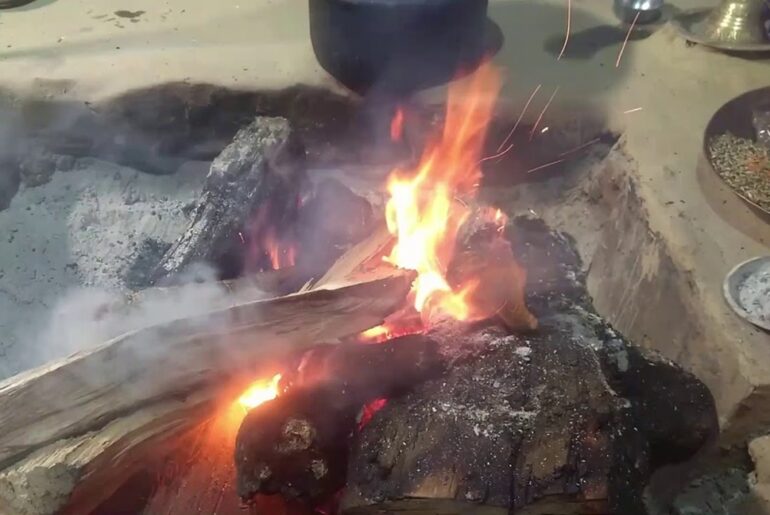
3. Sonprayag to Triyuginarayan distance
To complete the short sonprayag to triyuginarayan distance 12 km journey, you must first arrive at Sonprayag. Since Sonprayag itself is a smaller village and a dedicated Char Dham base camp, it does not have its own major air or rail links. Your journey will rely on the connecting cities of Uttarakhand.
By Air: Identifying the Sonprayag Nearest Airport
The most crucial air hub serving this entire region is Jolly Grant Airport (DED) in Dehradun.
The sonprayag nearest airport is situated approximately 235 kilometers away. Jolly Grant is a well-connected airport with daily flights from major Indian metropolitan areas like Delhi, Mumbai, and Bangalore. Upon landing at Jolly Grant, travelers have several options for the onward journey:
- Pre-Booked Taxis/Cabs: The most hassle-free option is to hire a pre-booked taxi directly from the airport to Sonprayag. This mountainous drive usually takes 8 to 10 hours, depending on traffic, road conditions, and necessary stops.
- Bus Services: You can take a bus from Dehradun or Rishikesh (which is closer to the airport) to Rudraprayag, and then take a connecting bus or shared taxi onward to Sonprayag.
By Rail: Finding the Sonprayag Nearest Railway Station
The rail network extends up to the foothills of the Himalayas, and the official sonprayag nearest railway station is the Yog Nagari Rishikesh Railway Station (YNRK), located about 210 kilometers from Sonprayag.
Rishikesh is well-served by trains connecting it to key cities across India. Travelers often find it convenient to arrive at either Rishikesh or the slightly further, but sometimes better-connected, Haridwar Junction (HW).
From Rishikesh Railway Station:
- Public Transport: Direct bus services to Sonprayag are often available, especially during the pilgrimage season. The bus journey is long, typically taking 7 to 9 hours.
- Hired Taxis: Private and shared taxis are readily available outside the station premises. This is often the preferred mode of transport for a faster and more direct journey to Sonprayag.
By Road
Sonprayag lies on National Highway 107 (NH 107, formerly NH 109), making it easily accessible by road from most major towns in Uttarakhand and North India.
| Starting Point | Approximate Distance to Sonprayag | Estimated Travel Time |
|---|---|---|
| Rishikesh | 210 km | 7 – 8 hours |
| Haridwar | 240 km | 8 – 9 hours |
| Dehradun | 225 km | 8 – 9 hours |
| Guptkashi | 30 km | 1 – 1.5 hours |
The road journey offers magnificent views, passing through the holy confluences of Devprayag and Rudraprayag, where the Alaknanda River merges with the Bhagirathi and Mandakini rivers, respectively.

4. Why the Triyuginarayan Temple is a Must-Visit
The temple is more than just a mythological wedding venue; it’s a living site of ancient rituals and breathtaking natural beauty. Beyond the Akhand Dhuni, the complex features four sacred water bodies (Kunds) believed to have been formed by water from Lord Vishnu’s navel.
- Brahma Kund: Used for bathing before offering prayers, named after Lord Brahma, who is said to have purified himself here.
- Rudra Kund: Named after Lord Shiva (Rudra) and used by devotees for ablutions.
- Vishnu Kund: Named after Lord Vishnu (Narayan) himself.
- Saraswati Kund: This Kund is said to be fed by the water of the Saraswati River, which originates from Lord Vishnu’s navel.
Pilgrims take a holy dip in these Kunds before entering the main temple premises, completing a ritual purification that prepares them for the darshan (viewing) of the deities. The entire site, surrounded by tall Himalayan peaks, offers an atmosphere of profound serenity and spiritual cleansing.
5. Accommodation and Best Time to Visit
Planning your stay around the sonprayag to triyuginarayan segment is crucial, especially during the peak season.
Accommodation
Since the Triyuginarayan village is small, lodging options are basic. Most tourists and pilgrims choose to stay in the nearby, more developed hubs of:
- Sonprayag: This area offers a wide range of guesthouses, small hotels, and dharamshalas (pilgrim rest houses). Since it’s a major roadhead, it has ample parking and better infrastructure. Staying here ensures you have easy access to the shared taxis for the final 12 km drive.
- Guptkashi: Located about 30 km before Sonprayag, Guptkashi offers more premium accommodation options and better amenities.
Best Time to Plan Your Journey
The best time to undertake the journey and visit the temple is from May to June and September to October.
- Summer (May – June): The weather is pleasant, offering clear skies and comfortable temperatures, perfect for the scenic drive and trek.
- Monsoon (July – August): Travel is strongly discouraged during the monsoon due to heavy rainfall, which frequently triggers landslides, severely impacting road conditions between Rudraprayag, Guptkashi, and Sonprayag.
- Autumn (September – October): This is arguably the most beautiful time, with lush green landscapes turning crisp and clear, providing magnificent views of the snow-capped mountains.
- Winter (November – April): While the temple remains open year-round, heavy snowfall can often block the road from sonprayag to triyuginarayan, making the final approach difficult or impossible by vehicle, requiring a longer and more challenging trek.
6. Essential Travel Tips for the Sonprayag-Triyuginarayan Route
- Book in Advance: During the peak pilgrimage (Kedarnath Yatra) and wedding seasons, accommodation in Sonprayag fills up quickly. Ensure you book your stay well ahead of time.
- Check Road Status: Always verify the status of the road conditions, especially if traveling post-monsoon or in early winter. Local authorities or your hotel/taxi operator can provide the latest updates.
- Carry Cash: While larger hubs have digital payment options, smaller villages like Triyuginarayan may rely solely on cash. Ensure you have enough currency for local transport, small purchases, and temple offerings.
- Dress Modestly: As this is a deeply revered Hindu temple, visitors are encouraged to wear modest attire that covers their shoulders and legs.
- Altitude: Triyuginarayan sits at an altitude of approximately 1,980 meters (6,500 feet). While less challenging than Kedarnath, it’s advisable to take it easy, especially if traveling directly from the plains, and stay hydrated.
Conclusion: Your Seamless Journey to Divine Bliss
The pilgrimage from Sonprayag is more than just covering the sonprayag to triyuginarayan temple distance; it is a journey into the heart of Hindu mythology and the majestic beauty of the Uttarakhand Himalayas. Whether you choose the quick 12 km drive or the reflective 5-7 km trek, the experience culminates in the profound spirituality of the Triyuginarayan Temple.
By knowing that the sonprayag nearest airport is Jolly Grant in Dehradun and the sonprayag nearest railway station is Rishikesh, you can plan your connectivity flawlessly. With the detailed logistics for the final stretch from sonprayag to triyuginarayan now firmly in hand, you are fully prepared to witness the eternal flame of the gods and receive the blessings of Lord Shiva and Goddess Parvati for a prosperous life. Safe travels on your sacred Himalayan sojourn!
Sonprayag to Triyuginarayan Sonprayag to Triyuginarayan Sonprayag to Triyuginarayan Sonprayag to Triyuginarayan Sonprayag to Triyuginarayan Sonprayag to Triyuginarayan Sonprayag to Triyuginarayan Sonprayag to Triyuginarayan


